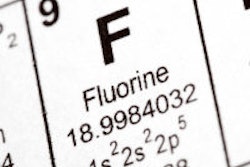
A recent recommendation by the U.S. Department of Health and Human Services (HHS) has brought about a resurgence of support for community water fluoridation within the oral health community.
 John Luther, DDS, is the chief dental officer at DentaQuest.
John Luther, DDS, is the chief dental officer at DentaQuest.Dentists have consistently been strong advocates for the health benefits of fluoridating public water supplies, and fluoridation is widely regarded as one of the top public health achievements of the past century. Officials from both public health organizations and professional dentistry agree that water fluoridation and fluoride toothpaste are largely responsible for the significant decline in tooth decay in the U.S. over the past several decades.
Fluoride doesn't cure or medicate -- it simply prevents. Similar to a vitamin, the right amount of fluoride in our drinking water improves resistance to tooth decay and causes us no harm. By preventing tooth decay, community water fluoridation has been shown to save money, both for families and the healthcare system.
 Michael Monopoli, DMD, is the director of policy and programs for the DentaQuest Foundation.
Michael Monopoli, DMD, is the director of policy and programs for the DentaQuest Foundation.In 2000, the U.S. Task Force on Community Preventive Services examined 21 studies and concluded that fluoridated water reduces tooth decay by a median rate of 29% among children ages 4 to 17. While children are typically cited as the beneficiaries of this protection, a 2010 study in the American Journal of Public Health (October 2010, Vol. 100:10, pp. 1980-1985) found that the fluoridated water consumed as a young child makes the loss of teeth from decay less likely 40 or 50 years later when that child is a middle-aged adult.
Recently, HHS announced the first change in the recommended amount of fluoride for public drinking water supplies in more than 50 years. The new guidelines utilize the best evidence available to clarify the amount of fluoride needed to achieve the optimal amount of tooth decay prevention.
The department gave several reasons for the change, mainly citing that Americans have more access to sources of fluoride than they did when water fluoridation was first introduced in the 1940s, but water is just one of multiple sources. Consumers also have access to fluoride toothpastes, mouth rinses, and prescription fluoride supplements, as well as fluoride applied by dental professionals.
“After more than 70 years of studying fluoridation in drinking water, it is clear that this practice is one of the most important health-promoting policies that a community can offer all its residents.”
We, along with the Centers for Disease Control and Prevention, the American Dental Association, and many other organizations, know that community water fluoridation is one of the most cost-effective means of preventing dental caries. The new recommendation, along with other current findings, strengthens our understanding of the preventive effects of fluoride on oral health and reinforces the need for communities to continue to invest in keeping fluoride in community water.
After more than 70 years of studying fluoridation in drinking water, it is clear that this practice is one of the most important health-promoting policies that a community can offer all its residents. This is especially true for those who are low-income, those with limited access to regular dental care, and those who experience health disparities firsthand. It's effective. It's safe. And it's the reason why both children and adults today have much less tooth decay than people had a generation ago.
John Luther, DDS, is the chief dental officer at DentaQuest. Michael Monopoli, DMD, is the director of policy and programs for the DentaQuest Foundation.
The comments and observations expressed herein do not necessarily reflect the opinions of DrBicuspid.com, nor should they be construed as an endorsement or admonishment of any particular idea, vendor, or organization.



















